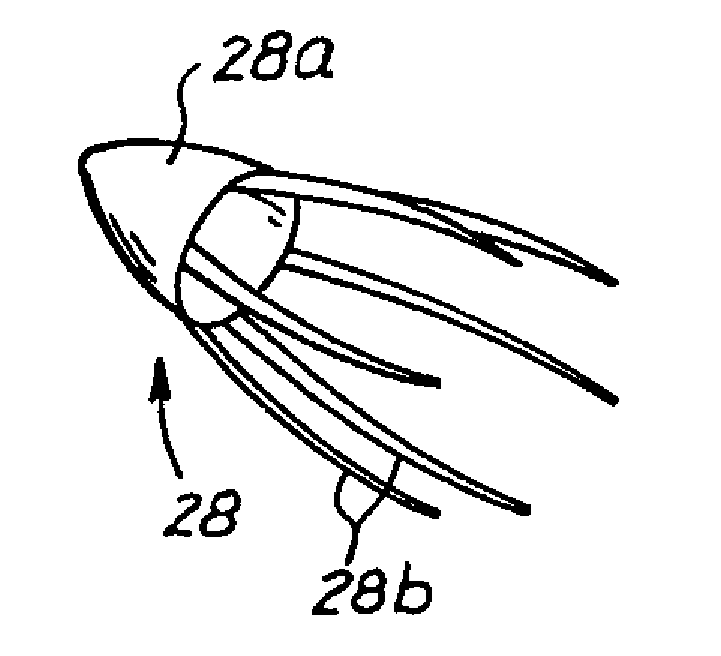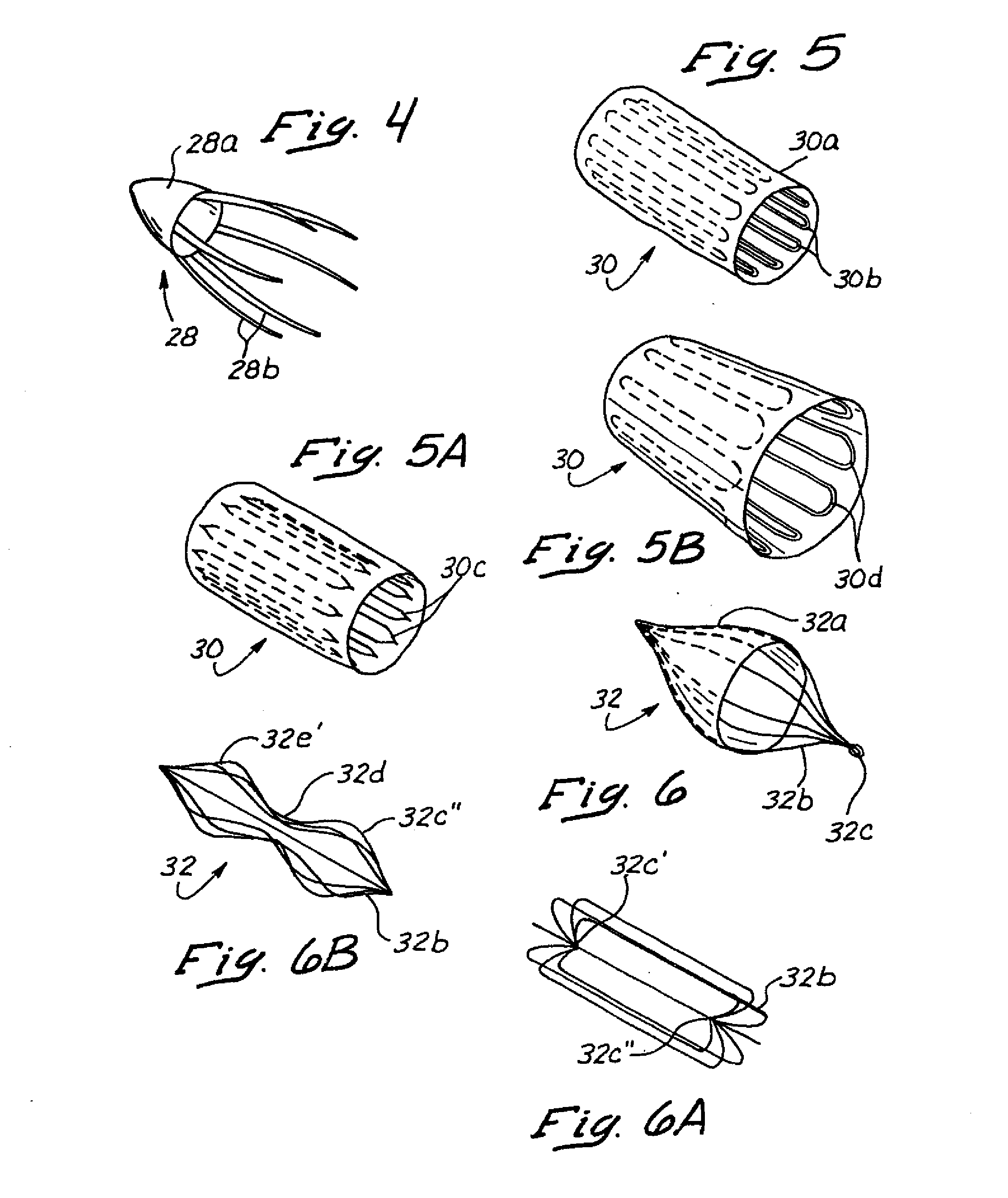Methods and Apparatus for Blocking Flow Through Blood Vessel
a technology of blood vessel and flow, applied in the field of medical devices, can solve the problems of typical embolization coil deployment and unaddressed problems, and achieve the effect of preventing blood flow
- Summary
- Abstract
- Description
- Claims
- Application Information
AI Technical Summary
Benefits of technology
Problems solved by technology
Method used
Image
Examples
embodiment 64
[0094] Such embodiment, in addition to providing the desired vaso-occlusion, further provides the advantage of defining offshoot vessels 68 that may otherwise go undetected (i.e., difficult to visualize) due to the high blood flow rate passing through the main vessel to be occluded. As will be appreciated by those skilled in the art, such high blood flow rate has a tendency to wash out or otherwise prevent sufficient contrast media from building up to detectable concentrations in such offshoot vessels. Additionally, such embodiment 64 further advantageously allows for the infusion of embolization means while such catheter remains in place in the vessel, thus eliminating the need for additional devices and procedure in the event it is necessary to occlude such offshoot vessels.
embodiment 70
[0095]FIG. 20 depicts a three-valved stent 70 positionable within a vessel that, in addition to occluding blood flow, may be advantageously manipulated to redirect blood flow through a vessel as may be desired. In this respect, the stent 70, which may be deployed as all of the other aforementioned embodiments, namely, via expulsion through the lumen of a catheter of a desired location, is provided with three (3) valves 70a, 70b, 70c capable of occluding or facilitating blood flow. The respective valves 70a, 70b, 70c may be manipulated such that blood flow paths can be controlled at particular pressure differentials. Advantageously, such embodiment 70 may be customized to create one flow channel under one set of pressure conditions and a different flow path under different conditions.
[0096] Referring now to FIG. 21, there is shown yet a still further preferred way to achieve the desired site-specific vaso-occlusion via the deployment of a vaso-occlusive agent 72 through the distal en...
embodiment 92
[0106] Such embodiment 92 advantageously provides high biocompatability, coupled with the fact that an abundant source of such material may be readily derived from the host patient. Furthermore, the vaso-occlusion achieved by using autologous tissue has the advantage of being easily removed insofar as such tissue may be readily removed at a later time by degrading the tissue, such as by cauterizing or cutting the same, at a later date.
[0107] In an alternative embodiment, as depicted in FIG. 28, the embolic facilitator device comprises a mass of intertwined wire mesh 100, referred to herein as embolization strands, that are connected at various random points within its structure and attached to an electrode or electrodes 102 whereby such strands 100 can be sufficiently energized to cause coagulation, and hence embolization, within the lumen of the vessel. At present, it is believed that the application from 2 to 50 watts to the strands 100 is sufficient to cause the necessary coagula...
PUM
 Login to View More
Login to View More Abstract
Description
Claims
Application Information
 Login to View More
Login to View More - R&D
- Intellectual Property
- Life Sciences
- Materials
- Tech Scout
- Unparalleled Data Quality
- Higher Quality Content
- 60% Fewer Hallucinations
Browse by: Latest US Patents, China's latest patents, Technical Efficacy Thesaurus, Application Domain, Technology Topic, Popular Technical Reports.
© 2025 PatSnap. All rights reserved.Legal|Privacy policy|Modern Slavery Act Transparency Statement|Sitemap|About US| Contact US: help@patsnap.com



